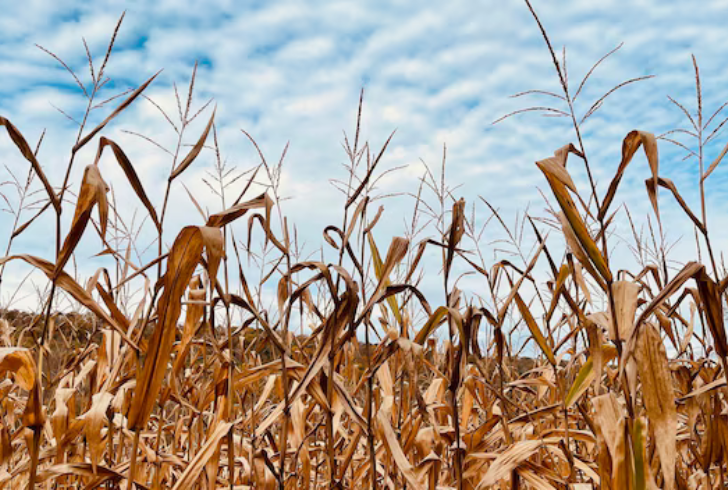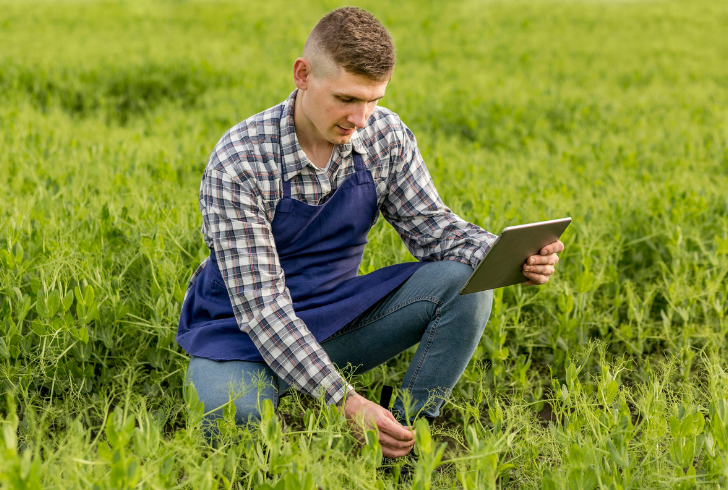As the planet continues heating up, the future of food in the U.S. is heading into uncertain territory. A newly published, years-long study paints a worrying picture for the country's food production system.
The research suggests that by the end of the century, climate change could cut U.S. crop yields in half—even with farmers adjusting to the changing environment.
For the next generation, this shift could shape not only what ends up on dinner plates but also who can afford it.
How Rising Heat Threatens Major Crops
The study, published in Nature, is the result of an eight-year effort by global scientists. It focused on six staple crops: maize (corn), soybeans, wheat, rice, cassava, and sorghum—together, these provide over two-thirds of global calories.
Using data from more than 12,000 regions in 54 countries, researchers assessed both climate impact and farmer adaptations like switching crop types and irrigation methods.

Freepik | EyeEm| New research shows how rising heat threatens key crops that feed most of the world.
The results were sobering. Every 1°C rise above pre-industrial temperatures could lower global food output by the equivalent of 120 calories per person per day. That might not seem like much at first glance, but it adds up. If temperatures increase by 3°C—something we’re currently on track for—that’s essentially like removing breakfast from everyone’s day.
U.S. Faces Some of the Heaviest Losses
While no part of the world will be spared, the U.S.—a key player in global food supply—is projected to take a significant hit. The country’s maize and soybean yields are especially vulnerable. By the end of the century:
1. Maize yields could fall by up to 50%
2. Soybean yields may also drop by half
3. Wheat production might shrink by 40%
The U.S. Corn Belt, known for its ideal growing conditions today, may not live up to its name in a few decades. According to researchers, even areas like the Midwest, which are currently optimized for high-volume agriculture, could become unsuitable for these crops under hotter and more unpredictable climate patterns.
Global Crop Shifts and Regional Struggles
Though the U.S. stands to lose heavily, other countries aren’t off the hook. Eastern China, central Asia, southern Africa, and parts of the Middle East may also see maize yields drop by as much as 40%. Wheat-growing regions in China, Russia, and Canada are expected to follow a similar trend.
And while rice—a crop that thrives in warm nights—might fare slightly better, that’s one of the few glimmers of hope.
In parts of sub-Saharan Africa, cassava—a staple subsistence crop—will likely struggle. Although known for being drought-tolerant, it is not immune to extreme heat. This poses serious risks for nutrition and food access in some of the world’s most food-insecure regions.
Can Adaptation Keep Up?
Farmers are not standing still. The study measured various real-world adaptations already underway—everything from changing crop varieties to shifting irrigation practices. In places like the U.S., farmers are even pushing crops like corn and soy farther north. But researchers warn that adaptation, as it stands now, may not be enough.
One limitation noted in the study is the lack of consideration for more extensive adaptations, like shifting planting dates or reworking entire farming systems. These strategies could help ease the blow, but they require widespread changes in policy, infrastructure, and behavior—none of which happen overnight.
High-Income Doesn’t Mean High Resilience
Ironically, the countries with the most resources may be among the hardest hit. Wealthier nations have agricultural systems built for stability and consistency. They’re deeply optimized for the climate conditions of the past 50 years. When those conditions change rapidly, these systems are more likely to break.
Poorer regions, by contrast, have often developed farming methods designed to handle harsh or unpredictable climates. That built-in flexibility could help buffer some of the damage. But overall, no place is truly safe from the ripple effects of shrinking global food supplies.
The Bigger Cost of Delaying Action

Freepik | Meaningful change starts when leaders invest in smarter farming and climate-ready food systems.
The message is clear: fossil-fuel-driven climate change isn’t just about sea levels or heat waves. It’s about dinner tables and grocery bills. Food insecurity is a looming reality—not only for low-income countries but for millions of people in high-income nations, too.
With global crop systems facing pressures on all sides, prices will rise, availability will shrink, and inequality will deepen.
This study doesn't just serve as a warning. It’s a detailed, data-driven projection of what life could look like for children born today, growing up in a world where staple crops become harder to grow, harder to find, and harder to afford.
Food Security Will Depend on More Than Farming
Climate change is rewriting the future of agriculture. While farmers are doing their part to adapt, long-term solutions will require a coordinated global response. Investing in resilient farming systems, reducing emissions, and rethinking land use will all play a role.
Without meaningful change, future generations could face a world where the U.S.—one of today’s agricultural powerhouses—can only produce half as much of its key crops. That’s not just a farming issue; it’s a global stability issue.




